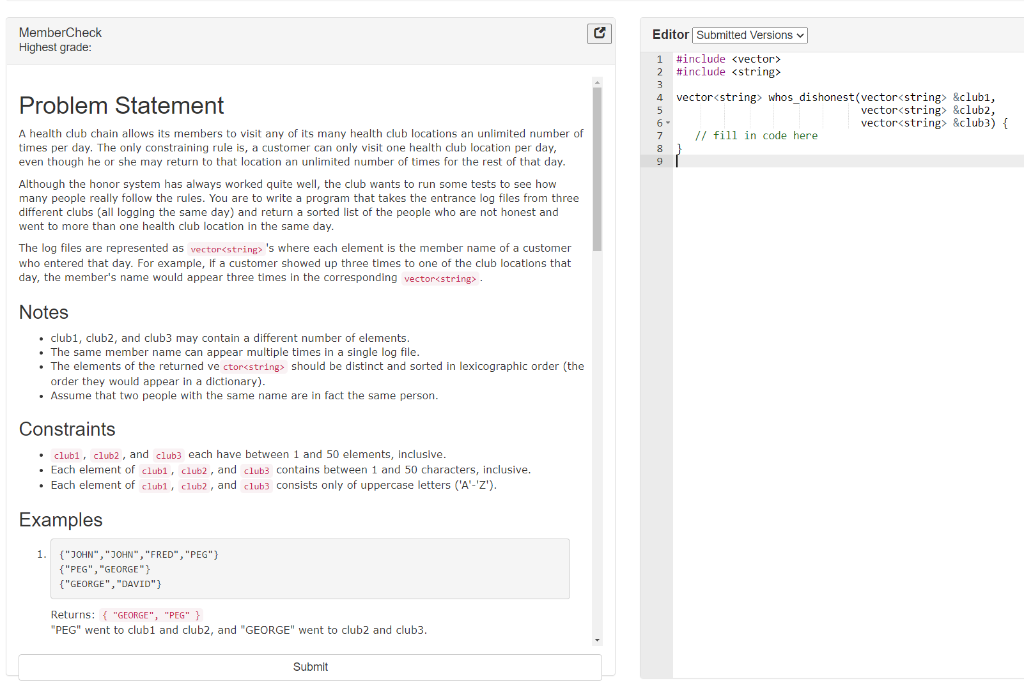Answered step by step
Verified Expert Solution
Question
1 Approved Answer
Please give answers in C++. We are recommended to use maps or multiple sets to solve this. It is preferable the answer be solved with

Please give answers in C++. We are recommended to use maps or multiple sets to solve this. It is preferable the answer be solved with maps and sets, but it is not necessary.
MemberCheck Highest grade: Editor Submitted Versions #includeStep by Step Solution
There are 3 Steps involved in it
Step: 1

Get Instant Access to Expert-Tailored Solutions
See step-by-step solutions with expert insights and AI powered tools for academic success
Step: 2

Step: 3

Ace Your Homework with AI
Get the answers you need in no time with our AI-driven, step-by-step assistance
Get Started


